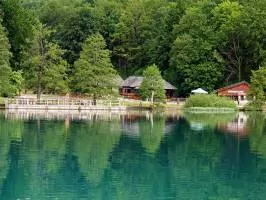
Self-Sufficiency In Uruguay, Chile, And Belize
How To Be Self-Sufficient Without All The Work
When I lived in Ireland, our house sat on 6 acres of land. Up a small hill behind the house was an area that had been, in a previous life, a kitchen garden. We restored the garden, after we discovered it, and planted everything from strawberries to carrots, lettuce, and tomatoes. It was a lot of work, both to re-create the garden and to maintain it. Rebuilding the garden was mostly my job, and planting and harvesting was my wife’s.
A kitchen garden alone won’t keep a family fed, though. We restored one outbuilding on the property into a chicken coop, with the help of my father-in-law, and started raising chickens. We planted fruit trees to create a small orchard. And I looked into raising a few cows, mostly to fatten them up in the fields and sell them.
We didn’t buy the property with the intention of turning it into a self-sufficient farmstead, and, in truth, if we’d had to survive off our 6 acres, we would have starved to death. Mostly because we were busy working. We didn’t have the time to keep up with the gardens or the chickens, and we never figured out the cows, as the government, we discovered, regulated livestock to the point that we would have needed a permit to raise even a couple of cows if our intent was to sell them to a butcher.
Today I own various bits of land in different countries, but most of it either isn’t suitable for farming or is owned with partners. I’m getting serious now about changing this, about expanding my flag planting efforts to include a farm somewhere, something bigger than 6 acres.
At the tail end of the last time it made real sense to buy a farm in Argentina (about 2006), I found a 1,000-acre property in Tucuman province. The property was fertile and lush and, with a price tag of US$600,000, a bargain for productive land in that country at that time. You could still buy ranch land in Argentina back then for as little as US$50 an acre, but productive land was going for US$1,000 an acre or more. Alas, the timing wasn’t right for me, and I had to pass on the purchase.
Self-Sufficient Life Opportunity
Today, with Argentine politics more complicated even than is typical for this country, I’m looking instead at farmland in Uruguay, Chile, and Belize. Remembering the difficulties we faced in Ireland trying to cultivate a half-acre garden and a bunch of chickens, I’m assessing options from a house in a “resilient” community like the one friend Phil Hahn is developing on the banks of the Belize River to the purchase of a few hundred acres in Uruguay that could be leased to a real farmer to generate cash flow and maybe part of the crop as annual payment.
Another friend is at the beginning stages of a self-sufficient community in Chile. He’s identified the land, about 125 acres with 500 feet of riverfront, and is working up the numbers. I’ll have more details on how to get in on this opportunity at the investment level for my Marketwatch members as soon as the plan is finalized. Right now, my friend is looking to develop a community of large lots (about 1 acre), each with enough room for a house and a private garden. About half of the total property will be kept as fields that could either be leased out to a farmer or worked by the residents in the community or both.
The idea of becoming a part of a community like this, of like-minded individuals, takes some of the work out of being self-sufficient. As Phil likes to say about his Carmelita community in Belize, he’s creating a place where people can be “independent together.” I think that the answer for me might be an independent farm in Uruguay, but I see the appeal of what Phil and my friend in Chile are creating.
Whether you see farmland as a straight investment opportunity or a backup plan in case of global crisis, I see having a piece of land, whether it’s within a communal setting or 1,000 acres all your own, as an important flag to plant right now.
Lief Simon



